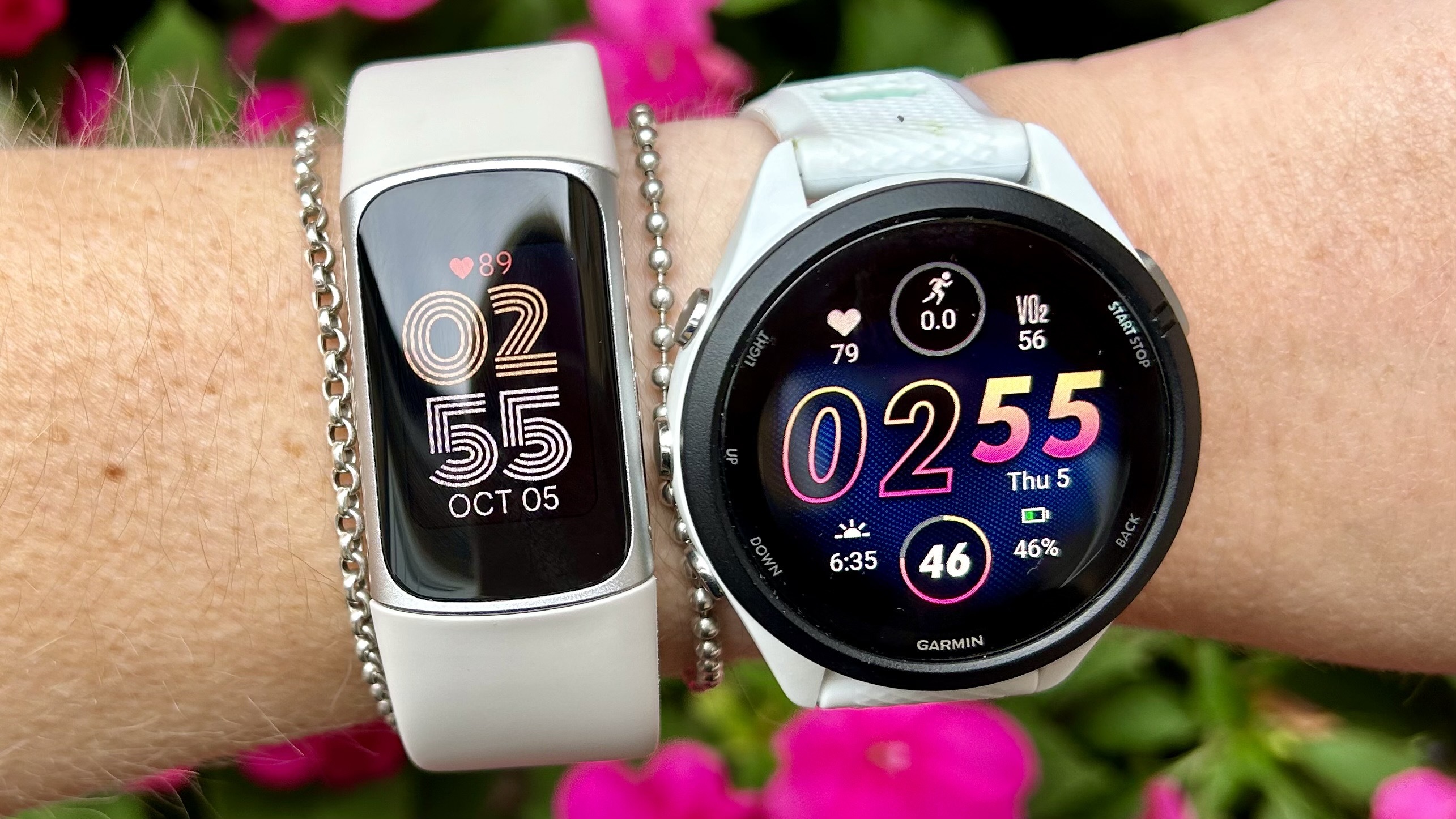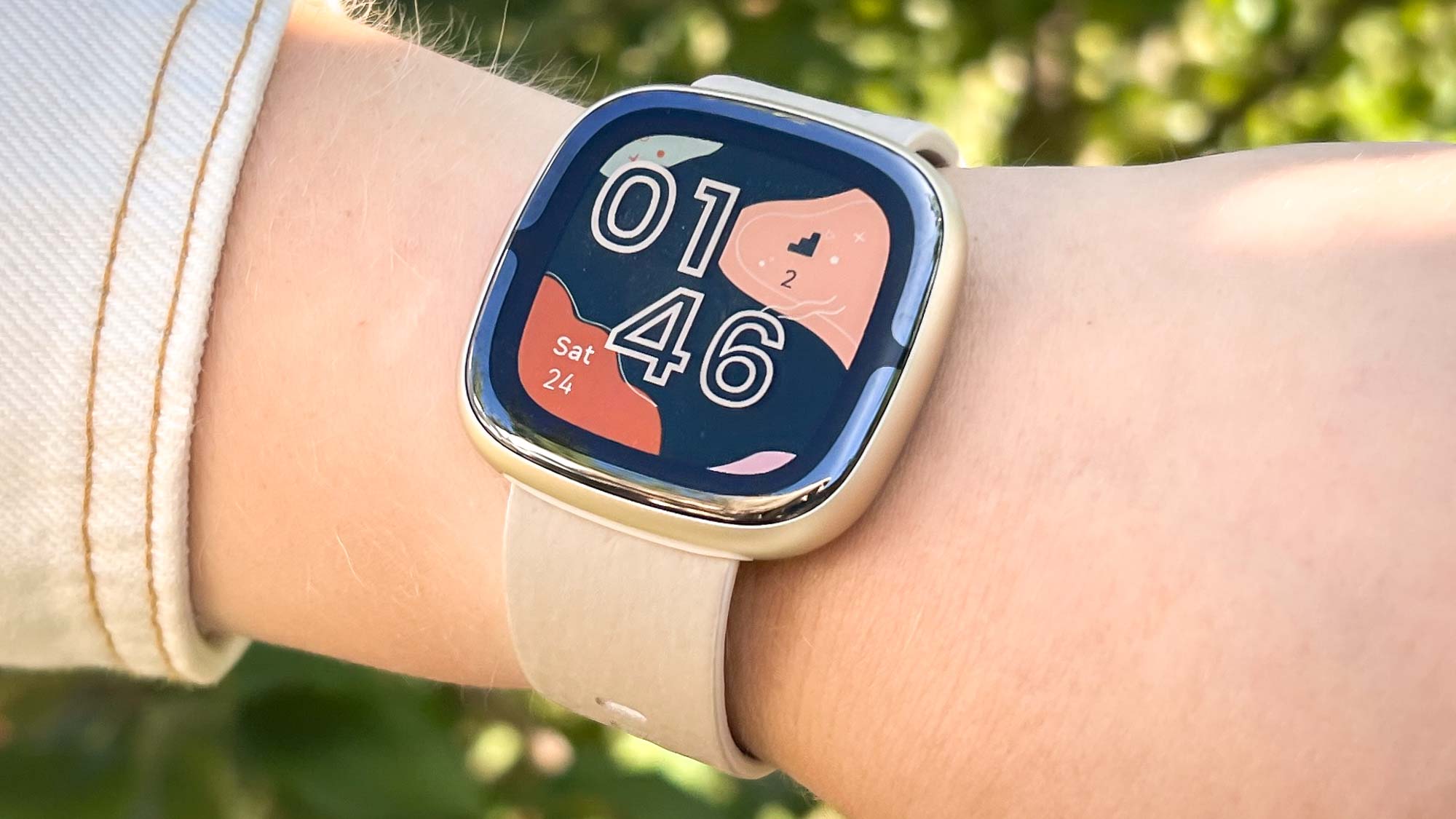I walked 5,000 steps with the Fitbit Charge 6 and the Garmin Forerunner 265 — here’s which was more accurate
Our fitness editor put the two trackers to the test

Ever wondered whether Garmin or Fitbit is best when it comes to tracking your steps? To find out more, I strapped the newly-released Fitbit Charge 6 and the Garmin Forerunner 265 to my wrist, and walked 5,000 steps to see which did the best job of keeping count. When I got home, I downloaded the data and compared which tracker was more accurate — read on to find out which won.
It’s important to point out that both the Fitbit Charge 6 and the Garmin Forerunner 265 can do a lot more than just count your steps. Both can accurately measure your heart rate, and calories burned, and give you accurate data on how well you’ve slept and recovered.
The Fitbit Charge 6 is now equipped with Google apps, a more accurate heart rate sensor, and the ability to pair with NordicTrack, Peloton, and Tonal gym equipment. The Forerunner 265 is an excellent training tool, with Garmin’s advanced training metrics, and the ability to download Garmin Coach training plans to the watch. You can read our Fitbit Charge 6 review and our Garmin Forerunner 265 review here.
Both the Fitbit Charge 6 and Garmin Forerunner 265 similarly count your steps — using an internal accelerometer, which measures the swing of your arm. Each swing counts for two steps. It doesn’t matter whether you wear your watch on your dominant or non-dominant hand, or whether you’re walking with your hands in your pockets, or holding something, the accelerometer should still measure your body’s movement.
Fans of Tom’s Guide will know this isn’t my first step-counting challenge — I recently walked with the Apple Watch Series 9 vs Fitbit Charge 6, and the Apple Watch Series 9 vs Garmin Forerunner 265. If you are interested in the new Fitbit, check out our Fitbit Charge 5 vs Fitbit Charge 6 face-off here.
I walked 5,000 steps with the Fitbit Charge 6 and the Garmin Forerunner 265 — here’s which was more accurate
In order to test the accuracy of the two watches, I wore both watches on one wrist, and in my other hand, I held a $6.99 tally counter tool from Amazon and clicked each time I took a step. 5,000 steps later, I finished walking, and compared the data from my Fitbit Charge 6 and Garmin Forerunner 265.
To compare steps, I uploaded both walks onto my phone and used Fitbit’s app to look at my overall steps and Active Zone Minutes. My Garmin automatically synced to my Strava account, where I was also able to view my data.
Sign up to get the BEST of Tom's Guide direct to your inbox.
Get instant access to breaking news, the hottest reviews, great deals and helpful tips.
| Row 0 - Cell 0 | Steps |
| Manual recording | 5,000 steps |
| Fitbit Charge 6 | 4,907 |
| Garmin Forerunner 265 | 5,010 |
My Fitbit Charge 6 recorded a walk of 2.29 miles in 40 minutes and 23 seconds. On the other hand, my Garmin Forerunner 265 recorded a walk of 2.38 miles. Both had similar average heart rate readings — 119 bpm on the Fitbit Charge 6, and 121 bpm on the Forerunner 265. The calorie burn was pretty different, however, with the Fitbit Charge 6 estimating I’d burned 237 calories, and the Forerunner 265 saying I’d burned 195 calories.
As you can see from the results, once again, the Garmin Forerunner 265 was pretty much spot-on when it came to measuring how many steps I’d taken on my walk. On the other hand, the Fitbit Charge 6 missed 93 of my steps.
It’s worth noting that no fitness tracker will be 100% accurate at counting every single step — I’m five foot two and have quite a short stride. When I’m running, I often find I have a high cadence because of this. What’s more, fitness trackers do a lot more than just tracking your steps, and counting steps alone isn’t the best metric when it comes to getting fitter and losing weight. That said, it’s a good place to start.
Walking 10,000 steps per day started as a marketing campaign, but experts have found that it’s a reasonable target for most adults. 10,000 steps is the equivalent of walking around 5 miles per day, which might sound like a lot, but might mean taking the stairs, not the elevator, getting off the subway a couple of stops early, or meeting a friend for a walk at lunch, not sitting in a coffee shop. There are a number of benefits of walking more, including losing weight, building muscle, and feeling less stressed. Here’s what 30-minutes of walking each day can do for your body.
Of course, it’s also important to note there’s a pretty big price difference between these two trackers. While the Fitbit Charge 6 is one of the best fitness trackers on the market for most people, and a big improvement on the Fitbit Charge 5, from a training perspective, it’s nowhere near as comprehensive as the Garmin Forerunner 265. The Fitbit Charge 6 costs $159.95, whereas the Garmin Forerunner 265 costs $449, and as one of the best running watches on the market, it’s an excellent training tool whether you’re gearing up for your first 5K, or fifth marathon.
More from Tom's Guide

Jane McGuire is Tom's Guide's Fitness editor, which means she looks after everything fitness related - from running gear to yoga mats. An avid runner, Jane has tested and reviewed fitness products for the past five years, so knows what to look for when finding a good running watch or a pair of shorts with pockets big enough for your smartphone. When she's not pounding the pavements, you'll find Jane striding round the Surrey Hills, taking far too many photos of her puppy.
